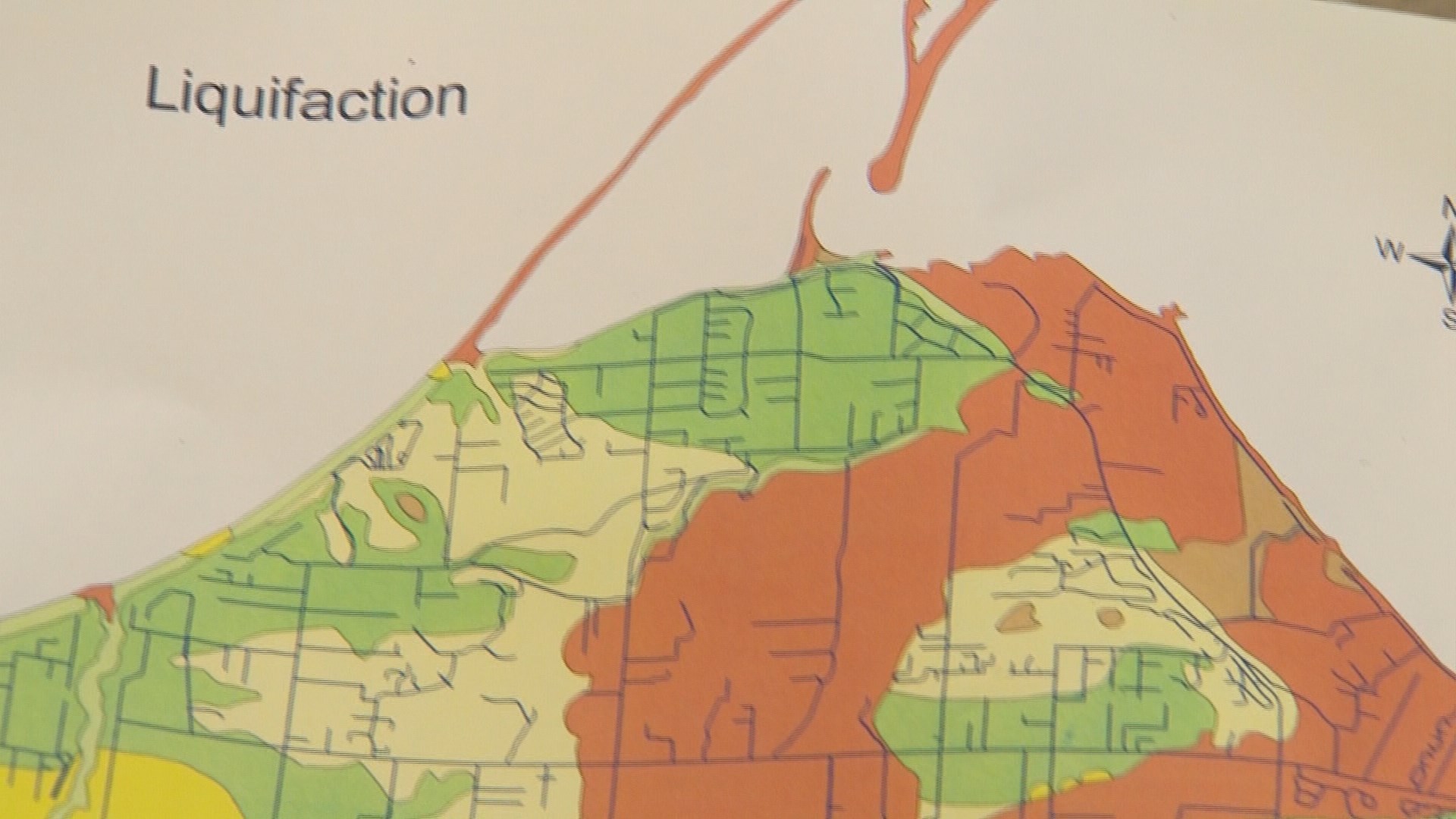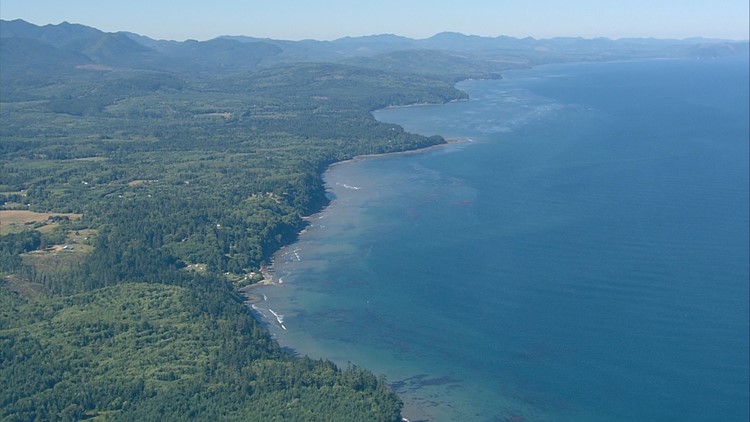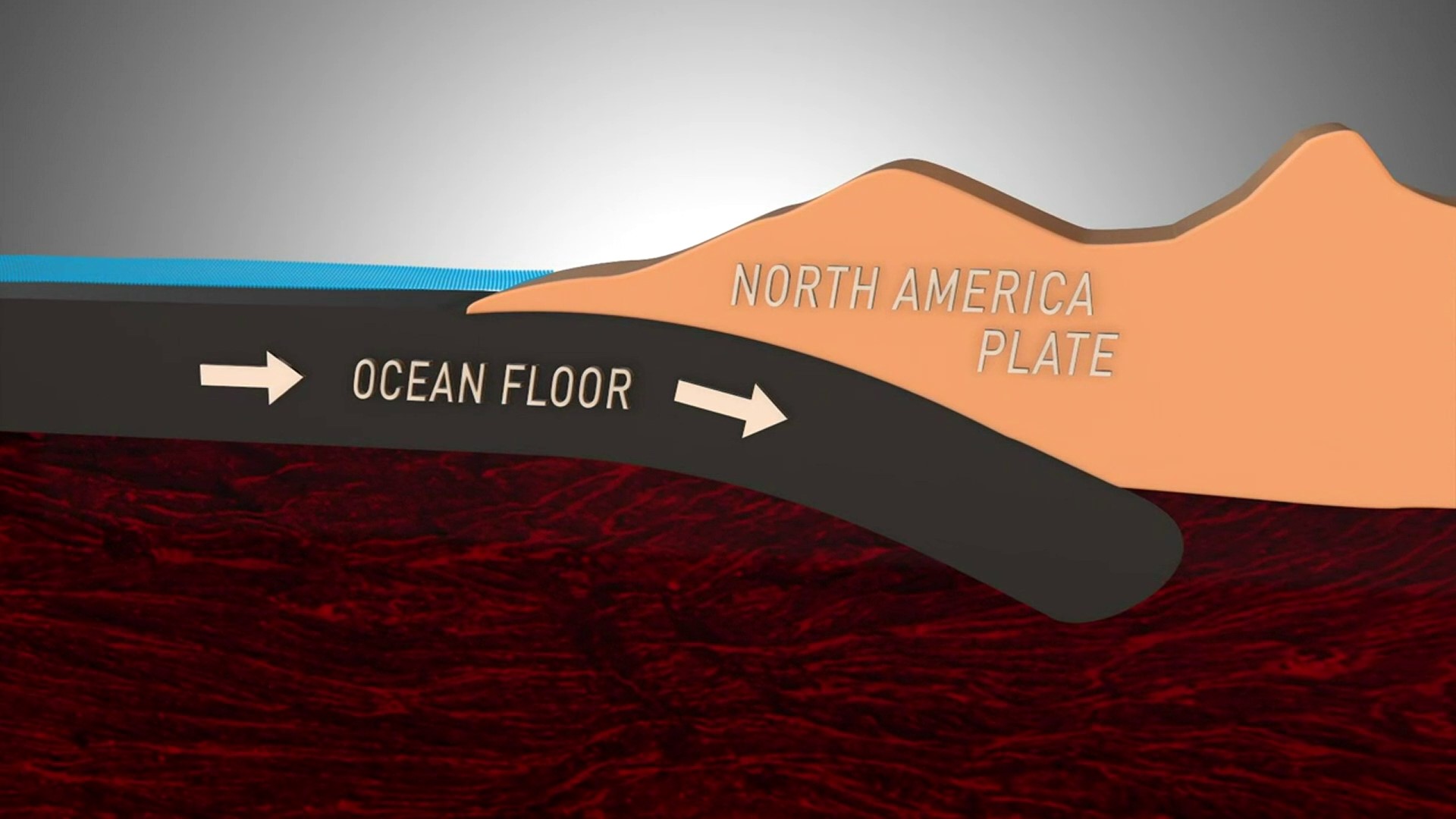If a major earthquake were to hit Clallam County, many areas would be in danger. However, Clallam County’s plan for disaster response could become a model for much of Western Washington.
One big area of concern is how shaking could cause bridges to fail, cutting off cities and towns from help.
“So each of these dots is where our bridges are, and where we expect our bridges to fail,” Blaine Zechenelly, a volunteer emergency planner for Clallam County Fire District 3, said pointing to a map. “And where those fail our ability move from one area to the other is eliminated.”

The result is a series of micro-islands. Even in the county seat of Port Angeles, deep ravines threaten to cut the city in half and the county into sections. Landslides a big worry.
Some hazards are obvious, and some are not. Take Lincoln Avenue that runs in front of the courthouse. Its vulnerability is literally paved over. What most people don’t realize is that this road is built on an old wooden railroad trestle with dirt dumped around it long ago.
“When they were building the gas station, a backhoe was working and backed up and the pavement gave way and the backhoe went partly into the hole which indicates the trestle is still there and there’s a void underneath,” said Penny Linterman. the county’s emergency management program coordinator.
And that is the foundation of a micro island. They have defined 20 of them to survive as communities until even temporary bridges can be built to start hooking everything back up.
Linterman has been working and organizing people who live on a plain going out to the Dungeness Spit and lighthouse. Some of the area is vulnerable to a tsunami. Much of the soil will liquify and become unstable from the shaking.
“People want to know what the truth is,” she said. “Where’s my house? Where is my house in relationship to the tsunami zone? Where’s my house in relationship to liquefaction?”

From west to east, Clallam County is setting up ways to deal with disaster in pieces.
“Wherever you’re at, you’re at,” said Dan Orr, assistant fire chief for Clallam County District 3. “You’re not going anywhere.”
He’s got eight firefighters on duty at any given time to cover 147 square miles and 33,000 people.
“You’re not going to have the bright red shiny fire truck showing up in your driveway,” he said. “You’re not! You’re not going to see police officers, you’re not going to see an ambulance, you’re not going to see anybody. Ladies and gentlemen, you are on your own. Whew. Okay, what do we do chief? So let’s talk about that. Right? 30 days of food, 30 days of water, 30 days of medicine. 30 days. I need you to be prepared for 30 days.”
In Clallam County they call this “camping in your house.”
“The first 24/48 hours are significant for helping rescue,” said Judy Harvey, who volunteers to help people prepare for disaster. “But then we’re at the point where how do we live within this, and how do we live within this where we stay somewhat joyful?”
Resources:
Clallam County Fire District 3 emergency preparedness
Clallam County disaster preparedness
Joyce emergency planning Facebook group
Join KING 5’s Disaster Preparedness Facebook group and learn how you and your community can get ready for when disaster strikes.



